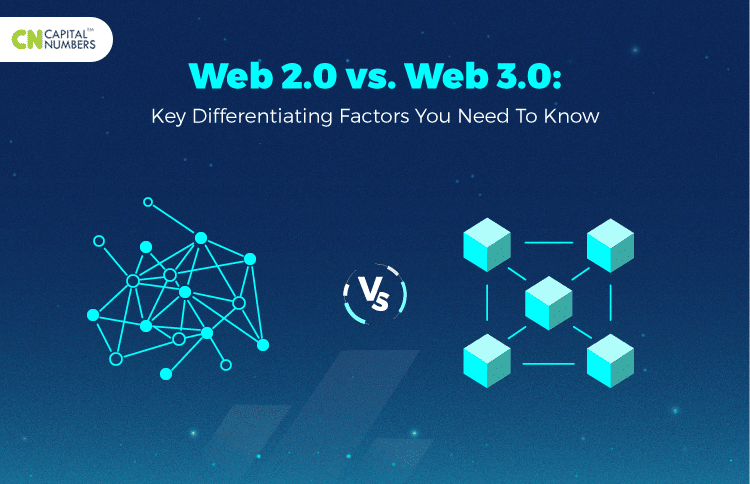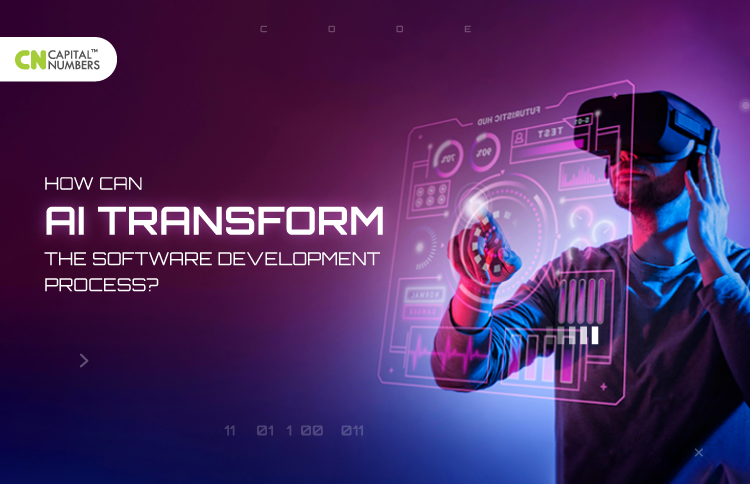Web 2.0 vs. Web 3.0: Key Differentiating Factors You Need To Know
Table of Contents
The internet has evolved dramatically since its inception and continues to grow today. The latest paradigm shift that has already begun is Web 3.0. It represents an advanced web iteration, a more transparent, decentralized, and open internet version that users can collaboratively control. Before finding the answer to “what is web 3.0 technology?”, it’s critical to look back at its previous generation and compare both.
Tim Berner-Lee, the founder of the World Wide Web, explains each phase of the web as follows;
- Web 1.0 is the “readable” phase where we see limited interaction between users.
- Web 2.0 is the “writable” phase where users have the flexibility to interact with the site and with each other.
- Web 3.0 is the “executable” phase where machines can interpret information like humans and then exhibit personalized content for users.
Let’s dig deep into the meaning, salient features, and differences between web 2.0 and web 3.0.
What’s Web 2.0 Technology?
Referred to as the second generation of interoperable internet services, Web 2.0 enables users to produce content and exchange it with other site users independently. Unlike Web 1.0, where users could only consume content from static websites, Web 2.0 introduced dynamic content. The new norms of interactivity of web 2.0 allowed users to interact with content published on the web. Thanks to the invention of technologies like HTML, CSS, JavaScript, etc., that made user interaction possible. Using these technologies, developers build applications that enable users to interact with content in real-time.
Web 2.0 defined the new norms of interactivity with concepts like blogging, social bookmarking, and social media becoming popular. It enables users to engage through texts and comments and attach and share content such as images and music with others. This web era is also known as the “Social Web” as it witnessed the emergence of notable apps like Facebook, Google, YouTube, and Instagram.
Key Features of Web 2.0
In web 2.0, Users can
- Participate in content creation and share dynamic and responsive content with others
- Collectively retrieve, classify and sort information
- Send and receive information from distinct resources
- Create and develop APIs for interaction between different programs
- Access web content from mobile devices, tablets, consoles, televisions, and almost any internet-connected device.
Web 2.0 is the current phase of the internet that we use today, while web 3.0 is its next phase.
What is Web 3.0 Technology?
Web 3.0 is commonly known as the Semantic Web. This version of the web uses an advanced metadata system that structures data that is readable by both machines and humans. Besides using keywords or numbers to search content, web 3.0 will allow you to use AI to understand the meaning of the content on the web. In “Web 3.0,” users can find and share information relatively quickly than in web 2.0. While the pillars of web 2.0 are based on social media, cloud, and mobile technology, the pillars of web 3.0 are artificial intelligence and decentralized networks.
The drawbacks of web 2.0 technologies, like the lack of built-in security and authorization mechanisms, create mistrust among the entities participating in the interaction. The use of AI and decentralized networks in web 3.0 overcomes these drawbacks.
Artificial intelligence allows the machine to machine interaction, advanced analytics, and some more intelligent operations that were, until now, missing on the web 2.0. Decentralized networks allow entities to own their data and give privacy to users through encryption, hence overcoming the trust roadblocks in Web 2.0. In practice, some popular Web 3.0 examples include Bitcoin, Augur, Diaspora, Uniswap, Sapien, etc.
Key Features of Web 3.0
- The Semantic Web can comprehend the meaning of words, so machines and humans can find, share, and analyze the content.
- It uses the power of Artificial Intelligence to furnish results speedily that is impossible to match for humans.
- Widely use three-dimensional design graphics and visuals in websites.
- Advanced authorization mechanisms, including encryption and DLTs, help protect user identity and data.
Here are the key differences between Web 2.0 and Web 3.
| Generation | Web 2.0 | Web 3.0 |
| Goal | Delightful End-user experience | User Empowerment |
| Technologies | JavaScript, AJAX, HTML5, CSS3 | AI, Decentralized protocols, Semantic web |
| Use of 3D Technologies | No | No |
| Applications Type | Web Applications | Smart Applications that use AI & ML |
| State of Data | Owned by Network | Entities have ownership |
| Focus | Community Development | Individual User Empowerment |
| Type of Advertising | Interactive | Behavioral |
| Effectuation | Read-Write | Portable |
WRAP UP
The clear comparison between web 2.0 and web 3.0 exhibits that web 3.0 offers a good infrastructure needed for smooth interaction between humans and machines. The ultimate goal of Web 3.0 is to make the internet relatively more autonomous and open. Known as the decentralized web, web 3.0 will be based on decentralized protocols where we can use blockchains to build applications and remove intermediaries. On the other hand, web 2.0 still forms the common basis for many web applications that we use today.
Therefore, it is too early to bury Web 2.0. It is safe to say that the two strategies coexist perfectly. We at Capital Numbers embrace both technologies and are all set to work on projects you propose to us. For details, book a call with our experts today!


 Web Development
Web Development Cloud Engineering
Cloud Engineering Mobile App Development
Mobile App Development AI/ML/GenAI
AI/ML/GenAI E-commerce
E-commerce Software Development
Software Development UI/UX
UI/UX QA
QA Dedicated Teams
Dedicated Teams











